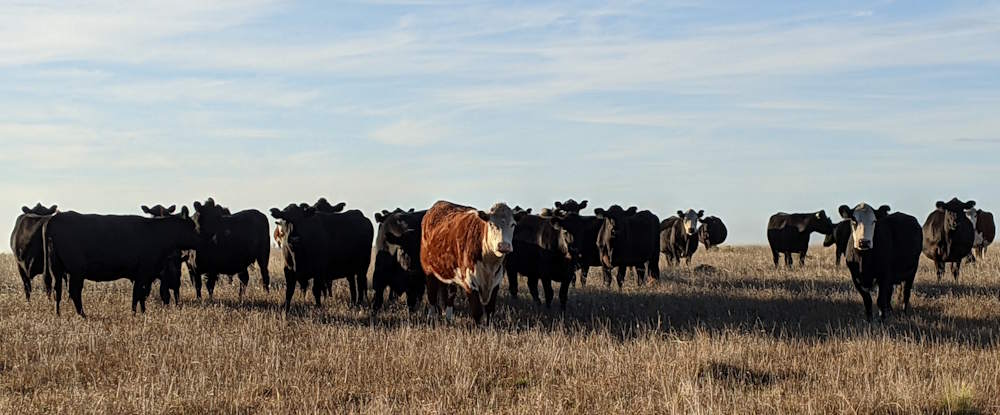In short
|

Cattle on private land – photo by Lyndsay Vivian
Neospora caninum in Victorian dairy farms
Neospora caninum is a protozoan (single-celled) parasite that can infect several species. It can significantly impact the reproductive performance and long-term productivity of dairy herds. Before our study, little was known about its current prevalence or transmission patterns on Victorian dairy farms including vertical (mother-calf) and horizontal (from the environment).
What we did
In collaboration with the University of Melbourne and Herd Solutions, we sought to understand how Neospora caninum spreads in Victorian dairy farms. We collected blood and milk samples from over 1,000 animals across Gippsland, the state’s main dairy-producing region, from farms with known or suspected Neospora infection history. Samples were taken at key reproductive stages and analysed to determine infection status.
Modelling transmission
To better understand long-term trends, we developed mathematical models simulating how Neospora spreads within a herd and how it responds to different control strategies.
Key findings:
- Overall, 32.3% of tested animals were found to be infected with Neospora.
- In some herds, infection exceeded 50%, showing that Neospora can be a significant but often hidden challenge.
- Variation between farms suggests that local management practices and herd histories play a big role in infection levels.
- Contrary to previous results, our data strongly suggest that vertical transmission alone is sufficient to sustain the infection within a herd over time frames that are likely to be relevant to the industry (5-10 years).
- We estimated a 43% probability that infected cows passed the parasite to their offspring.
- In our longitudinal dataset over 24 months, 8.29% of previously negative dams became infected during gestation.
- Additionally, 8.23% of calves born to negative dams were themselves infected, suggesting environmental exposure may also occur at a lower rate.
Modelling control strategies
To explore how the infection might be managed over time, we built a simulation model using the farm data. This allowed us to test different Victoria-relevant scenarios and their long-term impacts.

Projected Neospora caninum infection under different intervention strategies using a deterministic model. Strategies included Baseline (BL), Test and Cull (TC), and Test New Animals (TN). Each strategy was evaluated under two herd replacement systems (external vs. internal) and with or without enhanced biosecurity measures.
Key findings:
- Baseline: This is the status quo. Infection slowly worsened, especially in herds using internal replacements (i.e. replacing stock with calves born on site), due to concurrent sustained horizontal and vertical transmission.
- Test new animals: Screening external replacements helped reduce prevalence in herds bringing in animals, but did little in closed herds (i.e. with internal stock management) where infection was already established.
- Biosecurity improvements alone: These reduced the chance of new horizontal infections but had a limited effect where vertical transmission dominated.
- Test and cull: Regularly testing all animals and removing those that tested positive led to a 70-90% reduction in prevalence over 10 years.
- Combined strategy: The most effective approach combined testing, selective culling, and improved biosecurity. Even when we accounted for real-world limitations like imperfect test sensitivity and incomplete compliance, these integrated strategies consistently achieved the greatest and most sustained reductions in infection.
Research impact
These findings reinforce that Neospora is present on many Victorian farms, sometimes without clear signs. More importantly, they highlight the importance of monitoring and controlling vertical transmission as a key part of long-term management.
Identifying infected cows and their offspring can help:
- Avoid using infected heifers as replacements
- Make informed breeding and culling decisions
- Minimise the risk of maintaining infection in your herd.
Publications
- Impact of Neospora caninum in Victorian dairy farms: modelling effective control strategies. VetWatch Newsletter
For more information contact carlo.pacioni@deeca.vic.gov.au
Acknowledgements
Funding for this project was provided by Agriculture Victoria through the livestock biosecurity funds.
Page last updated: 04/12/25